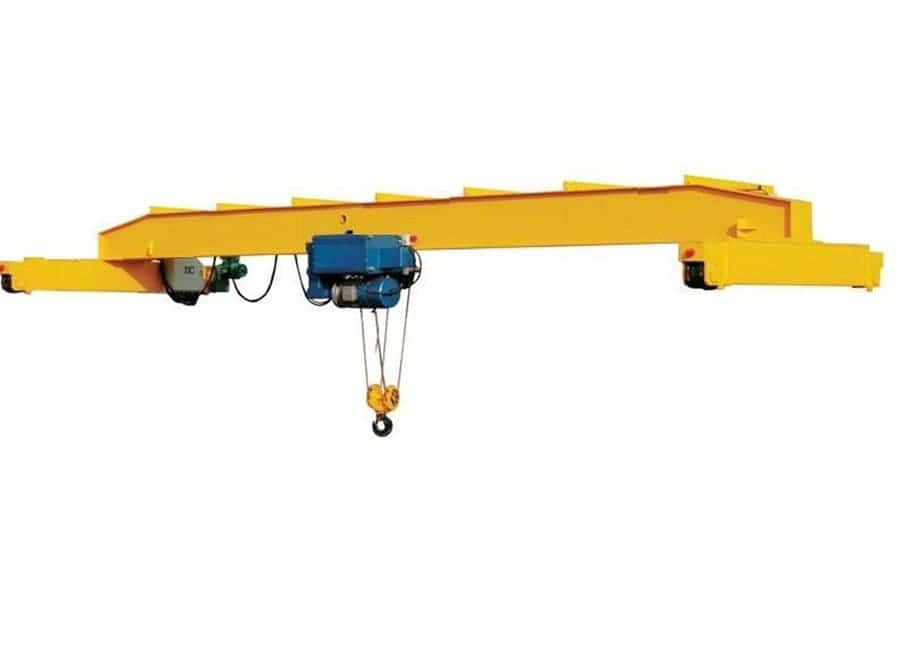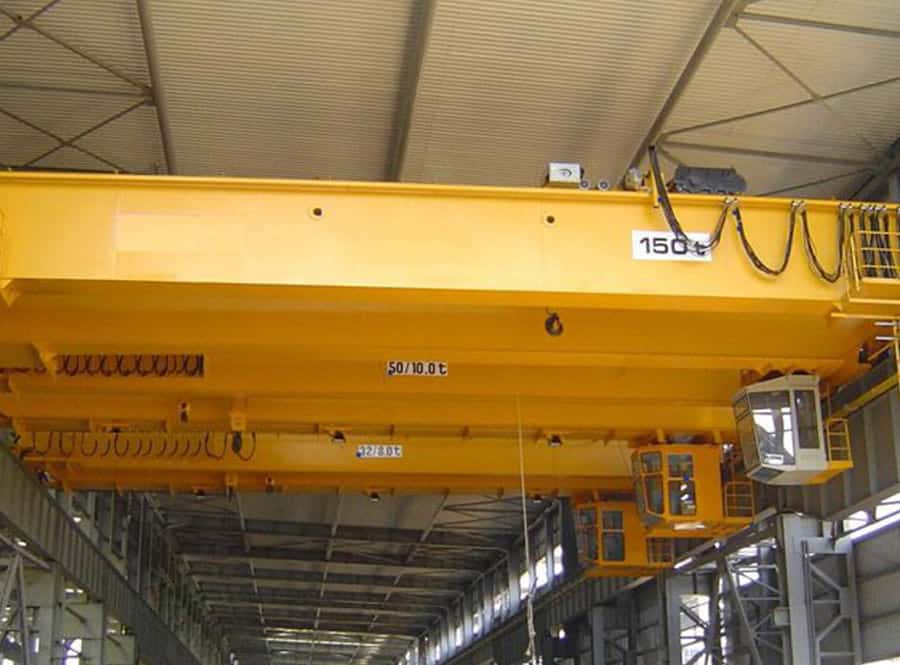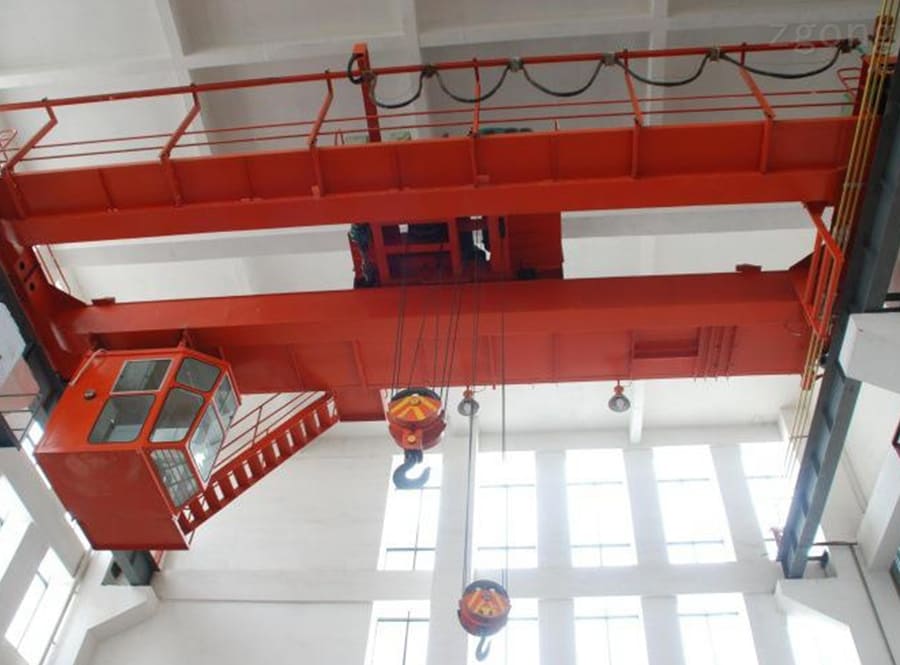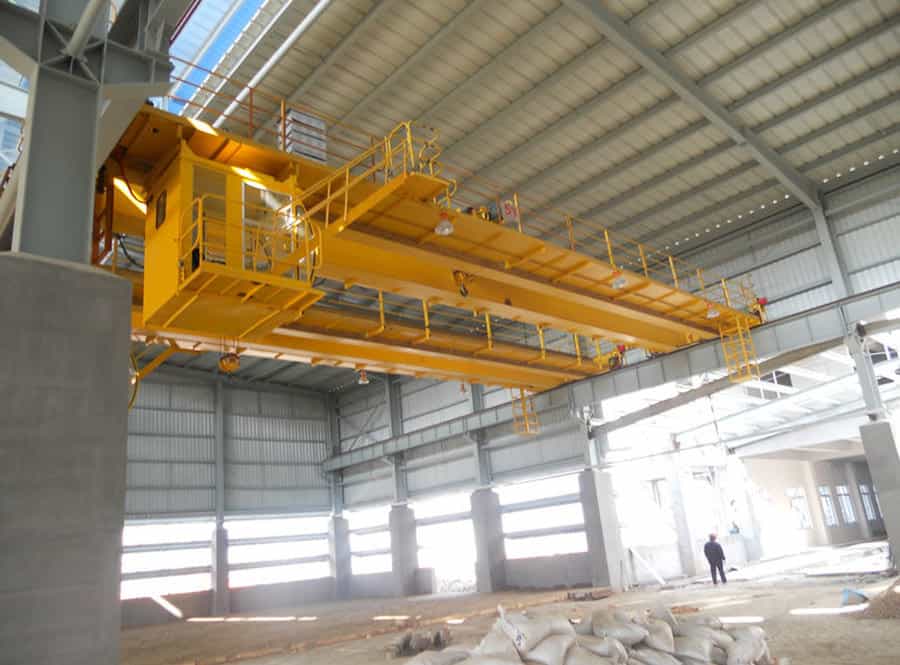Bridge crane is a major lifting and transportation equipment in the production logistics process, and its utilization efficiency is related to the production rhythm of the enterprise. At the same time, bridge cranes are also dangerous special equipment and may cause harm to people and property in the event of an accident.
The driver of the overhead crane is the most active and critical factor in the use of the mostna dizalica. The driver’s ability to operate the overhead crane is very important and is a major issue directly related to the company’s efficiency and safe production. The author summarizes his own practical experience in operating bridge cranes and puts forward the following operating experience based on the characteristics of bridge cranes.

1. Ovladati karakteristikama opreme i radnih predmeta
To correctly operate a bridge crane, you must carefully master key elements such as the equipment principle, equipment structure, equipment performance, equipment parameters, and operating process of the equipment you are operating. These key factors are closely related to the use and operation of this equipment.
1. Savladajte princip opreme
Pažljivo razumijevanje principa je preduslov i osnova za dobar rad opreme. Tek kada se principi jasno i duboko savladaju, uspostavlja se teorijska osnova, razumijevanje može biti jasno i duboko, a nivo rada može doseći određenu visinu.
2. Pažljivo savladajte strukturu opreme
Pažljivo savladavanje strukture opreme znači da morate razumjeti i savladati glavne strukturne komponente mosne dizalice. Mostne dizalice su posebna oprema i njihove konstrukcije imaju svoje posebnosti koje se moraju pažljivo razumjeti i savladati. Pažljivo savladavanje strukture opreme ključ je poznavanja opreme i vještog upravljanja opremom.
3. Pažljivo savladajte performanse opreme
Pažljivo shvatiti performanse opreme znači savladati tehničke performanse svakog mehanizma mosne dizalice, kao što su snaga i mehaničke performanse motora, karakteristično stanje kočenja kočnice, te sigurnost i tehničke performanse sigurnosti. zaštitni uređaj itd. Samo savladavanjem performansi možemo bolje iskoristiti situaciju, naučno kontrolisati opremu, odgoditi proces propadanja i spriječiti i smanjiti pojavu kvarova.
4. Pažljivo savladajte parametre opreme
Pažljivo savladavanje parametara opreme znači da morate razumjeti i ovladati glavnim tehničkim parametrima mosne dizalice, uključujući vrstu rada, radni nivo, nazivni kapacitet dizanja, radnu brzinu mehanizma, raspon, visinu dizanja itd. Tehnički parametri svakog komada oprema se često razlikuje. Ovisno o tehničkim parametrima opreme, postoje razlike u njenim performansama. Pažljivo poznavanje tačnih vrijednosti parametara za svaku nadzemnu dizalicu je ključno za ispravno rukovanje opremom.

5. Pažljivo savladajte proces rada
Carefully mastering the operation process means mastering the steps and processes of the production operations served by the bridge crane, and striving for the best design and reasonable operation of the lifting and transportation procedures used in various processes. Only by proficiently mastering the process flow can we master the operation rules, be confident and operate freely, so as to improve work efficiency, safety and reliability.
2. Shvatite promjene statusa opreme
The mostna dizalica is special equipment, and the operation and operation must ensure the technical status and intact condition of the bridge crane. During the operation of bridge cranes, they are affected by factors such as production conditions and environment. The functions and technical status determined during the original design and manufacturing may continue to change and be reduced or deteriorated. Therefore, the driver must carefully grasp the status changes of the equipment, conduct good operation control of the bridge crane, and perform maintenance and inspections carefully to prevent and reduce failures.
1. Pažljivo shvatite promjene statusa opreme
Opremu je potrebno pažljivo održavati. Redovno čistite, čistite, podmazujte, podešavajte i zategnite sve delove mosne dizalice u skladu sa zahtevima sistema održavanja. Pravovremeno rješavajte različite probleme koji se javljaju u bilo kojem trenutku, poboljšajte uslove rada opreme, otklanjajte probleme u korijenu i izbjegavajte nepotrebne gubitke. Praksa je pokazala da vijek trajanja opreme u velikoj mjeri ovisi o stepenu održavanja.
2. Pažljivo shvatite promjene statusa opreme
Pažljivo shvatite promjene statusa opreme i budite u mogućnosti provjeriti opremu. Razumjeti i ovladati dijelovima mosne dizalice koje treba često pregledavati, te ovladati metodama i sredstvima za provjeru dijelova.
3. Skills in monitoring equipment through senses
Skills in monitoring equipment through the senses, i.e. seeing, hearing, smelling, touching and feeling. “Visual” means to use vision to observe the surface of the equipment in order to detect intuitive defects and failures. “Listening” means relying on hearing to detect the status of the device. The driver operates in the cab and cannot see the operating conditions of the equipment on the bridge. Hearing becomes an important auxiliary safety means. When electrical appliances or mechanical equipment are operating normally, they generally only emit very light harmonic sounds, but when they are malfunctioning, they will make abnormal noises. Experienced drivers can determine the approximate location of the fault based on the different changes in the sound. Therefore, identifying diseases by sound should be one of the internal skills of a driver. “Smell” means relying on the sense of smell to detect the status of the device. The electrical coil of the bridge crane catches fire, and the brake pads smoke and emit a pungent odor that can be smelled from a distance. If you find any peculiar smell, you should stop the vehicle immediately for inspection to avoid causing fire or other major equipment accidents. “Touch” is to diagnose the abnormal status of the equipment through hand feeling. Drivers sometimes encounter abnormal conditions in equipment and are able to diagnose and determine the cause of the malfunction. “Jue” here refers to feeling or feeling. Drivers will feel information from all aspects when operating, and experience will tell you what is normal and what is abnormal. When drivers find that they feel different from usual at work, they should immediately trace the source to avoid future troubles.
3. Communicate carefully with ground support personnel
The use of operating mosne dizalice to complete lifting tasks requires the cooperation of many people such as drivers, commanders, and rigging personnel. Sometimes its operating scope also includes other equipment and operators, so as a driver, you must carefully work with the ground. Communicate and cooperate well with the personnel. The work objects, equipment status, work instructions, and operating environment must be confirmed before proceeding.
The driver must confirm the command language with the ground personnel before operating. If the command language is not agreed upon, the operation cannot be carried out. The driver must concentrate when operating and operate according to the commander’s signals. Before each operation, the driver should ring the bell to remind the personnel at the operation site to pay attention. At the same time, pay attention to the situation around the lifting objects. No one is allowed to stay under the hoisted object, under the arm, or in the area where the hoisting weight rotates. When the line of sight between the driver and the hoisted object may be blocked during hoisting, the driver should carefully inspect the on-site environment within the hoisting range and confirm the hoisting path of the hoisted object before hoisting. During the hoisting process, the signal contact with the commander should be strengthened. At the same time, the commander should stand within the driver’s line of sight to give commands to avoid hoisting safety accidents due to blocked sight. If there are only drivers and hookers working on site, the driver must work closely with the hookers and work in unison. When moving and lifting heavy objects, you should only follow the signal given by the hooker. However, no matter who sends the “stop” signal, you should stop immediately.
4. Correctly determine the nature of the emergency and take appropriate emergency response measures.
Bridge cranes are dangerous equipment and may cause property damage and casualties once they are out of control. As a driver of an overhead crane, you should correctly judge the nature of the emergency and take appropriate emergency response measures. It is a must-have skill to avert danger or minimize accident losses in dangerous situations.
The emergency state of the mostna dizalica can also be called the state of the bridge crane approaching danger. It is characterized by the sudden appearance of equipment (device) in a dangerous, failed, and out-of-control state. Improper handling will cause the consequences of an accident. There are many types of emergency situations for bridge cranes. The most likely ones include failure of the lifting brake mechanism, sudden power loss of the crane, loss of control of the trolley control mechanism, broken wire rope, crane fire, lifting limit failure of the lifting mechanism, etc. situation. We should be fully prepared in terms of ideological understanding and establish emergency plans for various possible dangers.
In addition, you should also have a clear understanding of the production operation procedures, so that you can better cooperate with the work and avoid accidents. For example, if the hoisting brake fails when there is a heavy object on the crane hook and the heavy object slides down, the driver should continuously ring the bell or whistle to signal all personnel on site to avoid it.





















